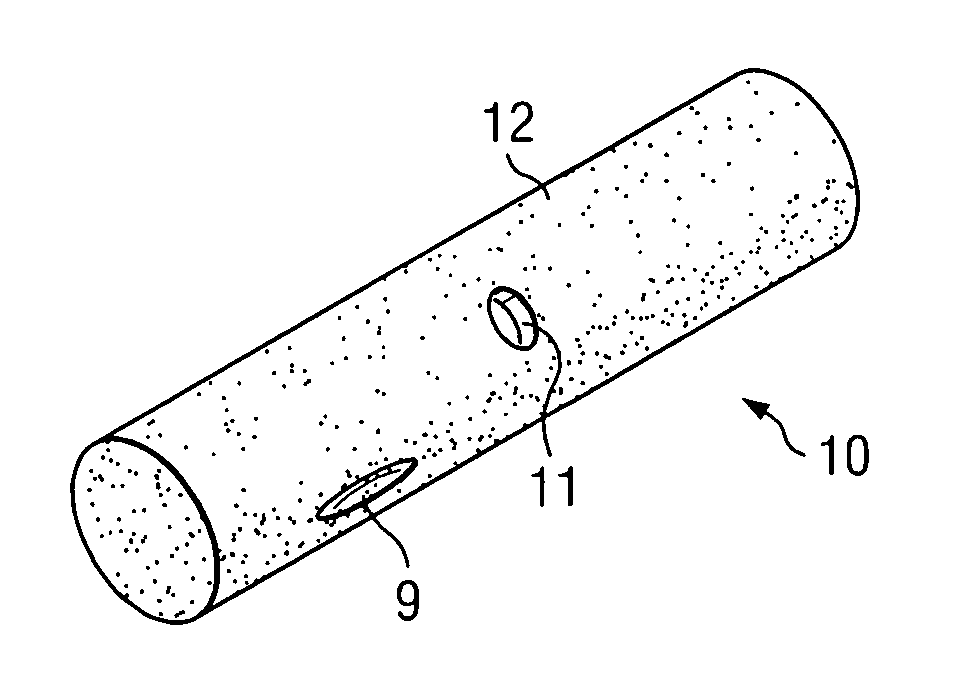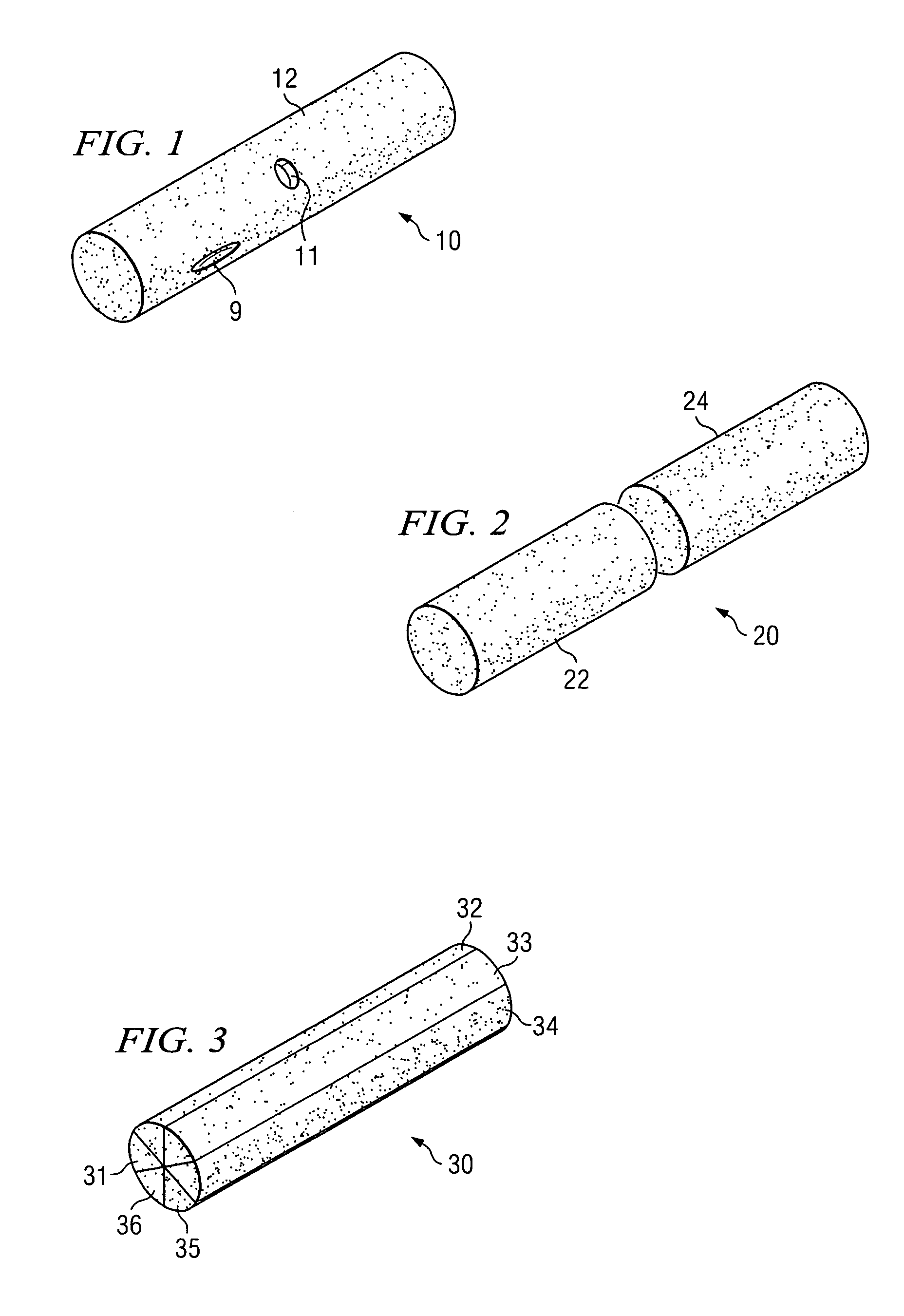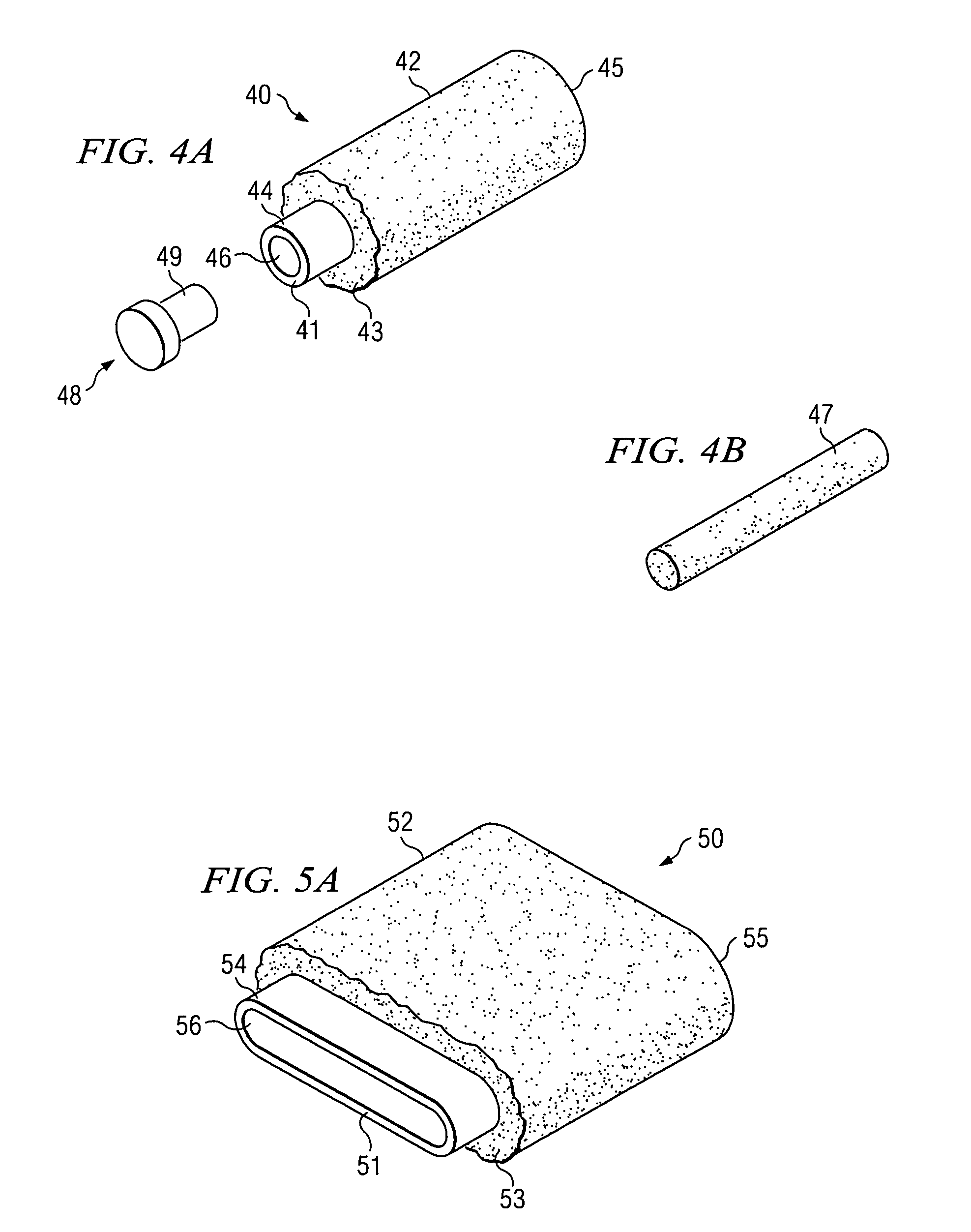Porous drug delivery system
- Summary
- Abstract
- Description
- Claims
- Application Information
AI Technical Summary
Benefits of technology
Problems solved by technology
Method used
Image
Examples
Embodiment Construction
[0095]Implantable infection shields and systems for drug delivery according to the present invention comprise porous linked fibrous biomaterial disposed to either stimulate or inhibit cellular growth and / or angiogenesis, according to the predetermined requirements of the various embodiments.
[0096]One embodiment is a reservoir which contains within it a source of one or more drugs to be delivered. Intended for implantation in vascular tissue, the drug source may be a biodegradable matrix in which the drug or drugs to be delivered are dispersed, and which dissolves slowly in tissue fluid from the organism in which the reservoir is implanted. The source may also be a cell culture contained within a sealable porous chamber within the reservoir. Cultured cells receive food and oxygen by diffusion in the tissue fluid which passes through the sealable porous chamber walls. Cell-to-cell contact between cells of the organism and cultured cells is, however, prevented.
[0097]Thus, a method for ...
PUM
 Login to View More
Login to View More Abstract
Description
Claims
Application Information
 Login to View More
Login to View More - R&D Engineer
- R&D Manager
- IP Professional
- Industry Leading Data Capabilities
- Powerful AI technology
- Patent DNA Extraction
Browse by: Latest US Patents, China's latest patents, Technical Efficacy Thesaurus, Application Domain, Technology Topic, Popular Technical Reports.
© 2024 PatSnap. All rights reserved.Legal|Privacy policy|Modern Slavery Act Transparency Statement|Sitemap|About US| Contact US: help@patsnap.com










